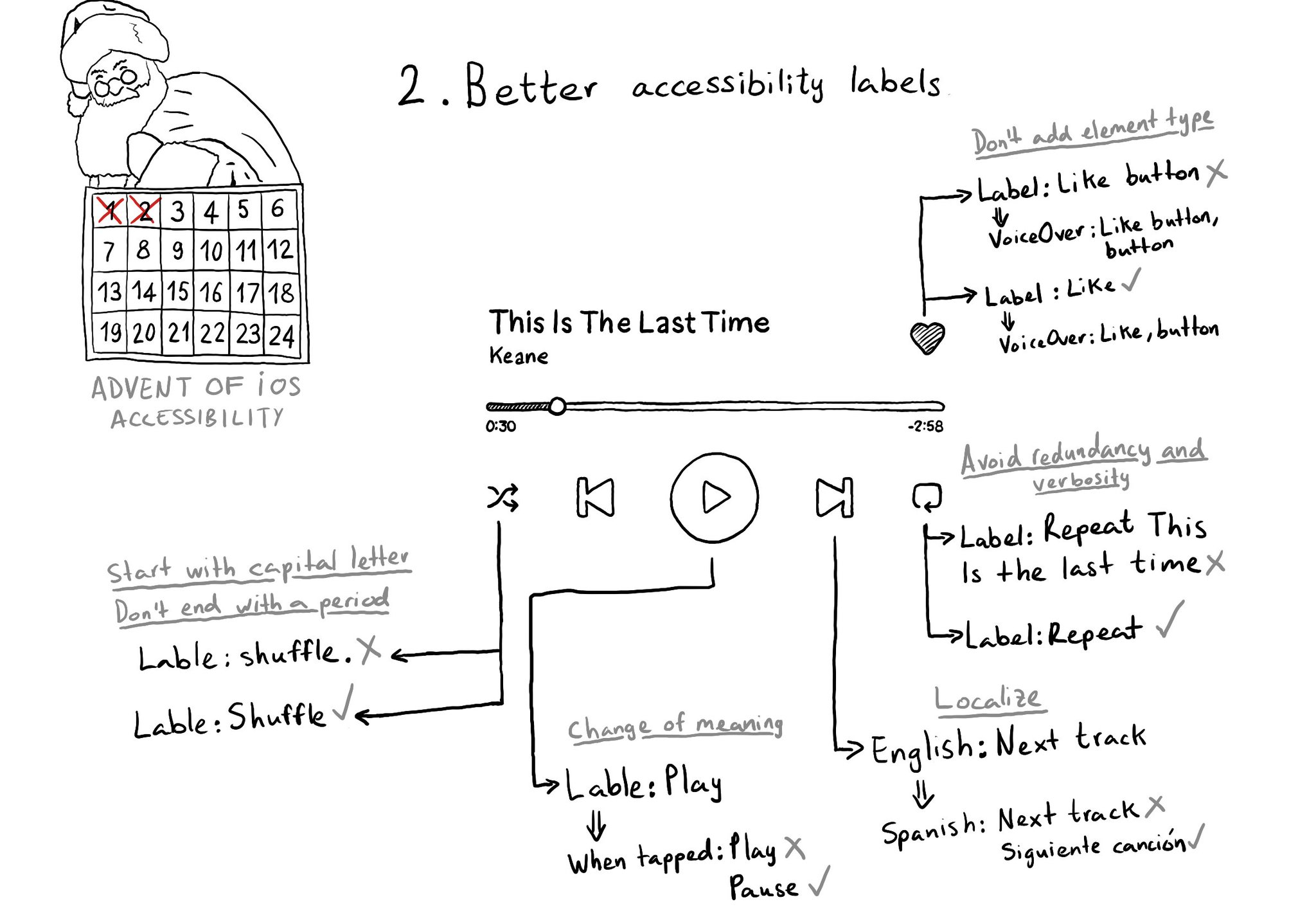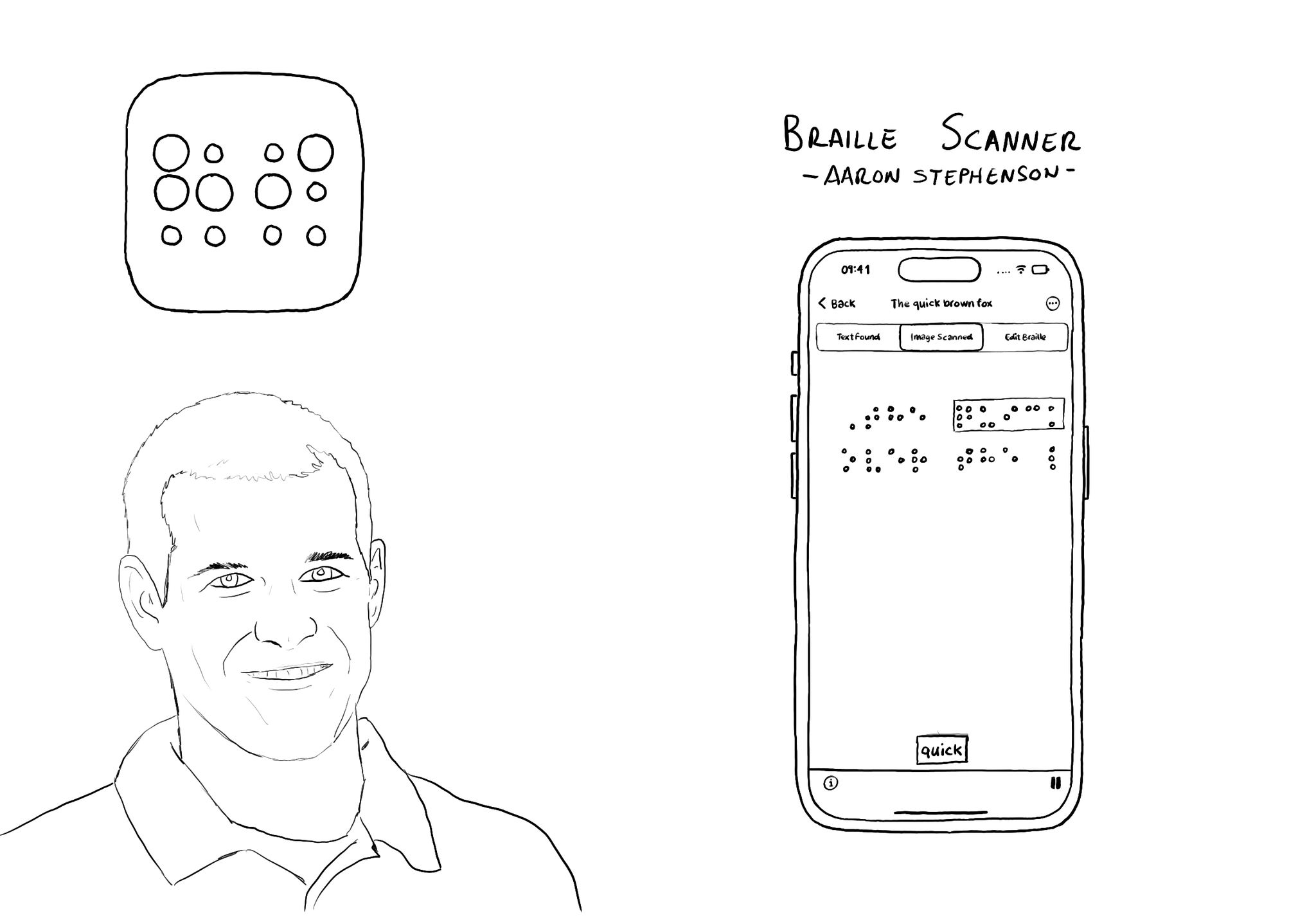Some recommendations for improving your accessibility labels: don't add the element type, avoid redundancy and verbosity, localize...
@MobileA11y has an excellent blog post on it: https://mobilea11y.com/blog/writing-great-labels/
@jordyn2493 has a great video too: https://developer.apple.com/videos/play/wwdc2019/254/

You may also find interesting...
Do you know when a UI element is greyed out to show that it is disabled? Yes, there is an accessibility trait for that too: .notEnabled. VoiceOver will say “dimmed” after its accessibility label and Voice Control and Switch Control will skip it.

@azzoor is the developer of the Braille Scanner It uses computer vision to locate the page and Machine Learning to match Braille to letters. You can see English letters above the braille, convert them to speech, copy and paste it... so cool!
If you want to keep yourself up to date with what’s going on, or what has been published lately, on how to develop more accessible mobile apps, make sure you subscribe to Accessible Mobile Apps Weekly by @RobinKanatzar from @accessible_apps.